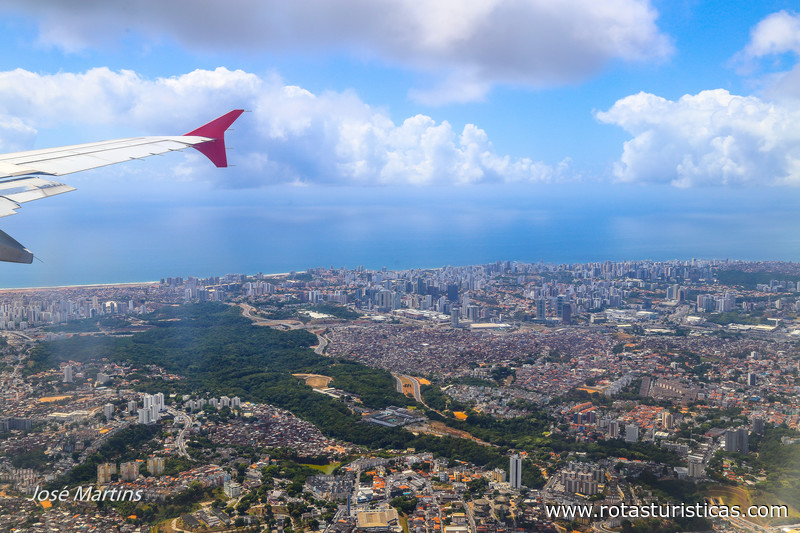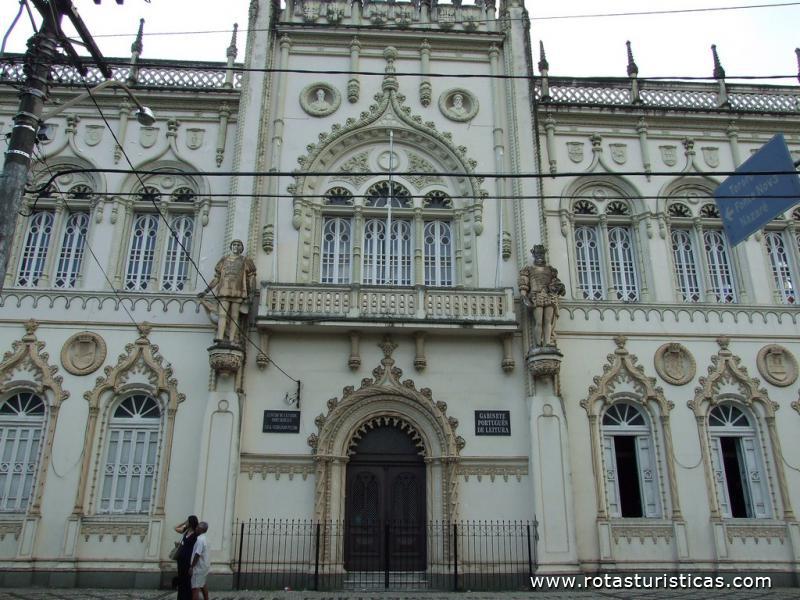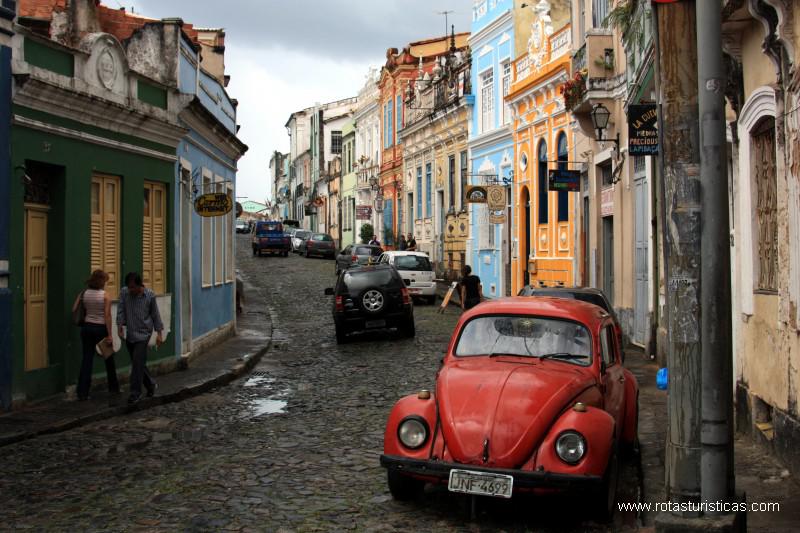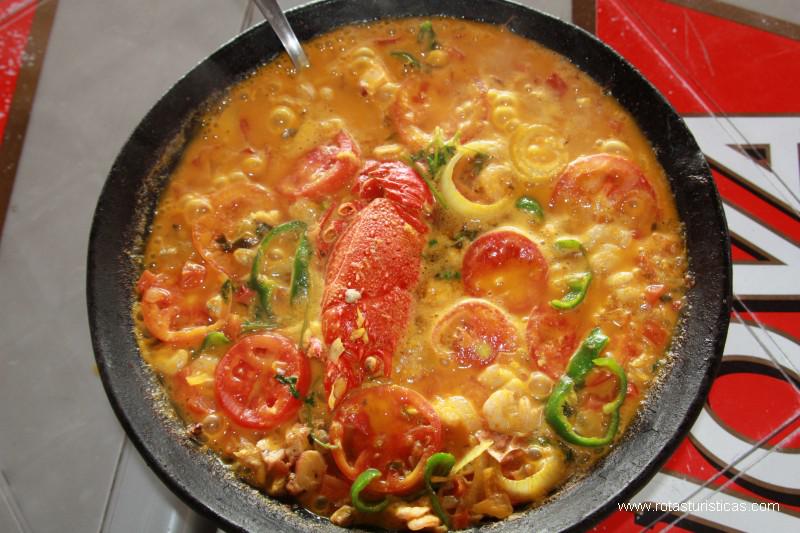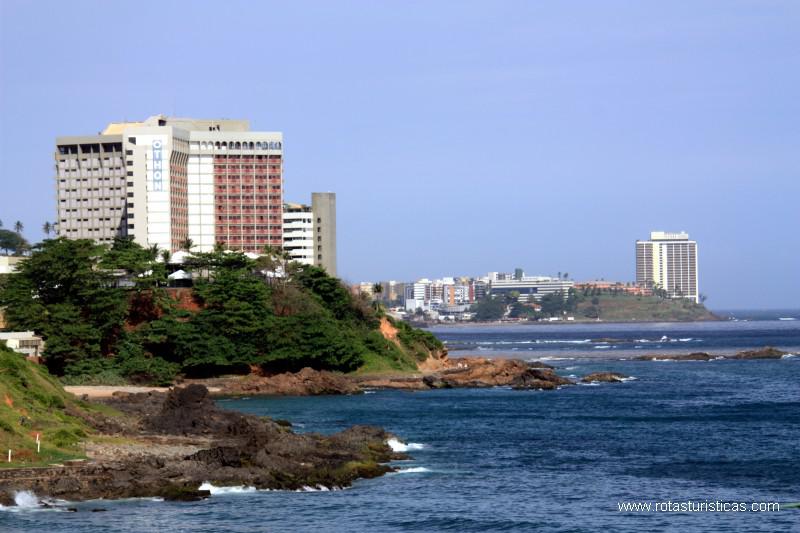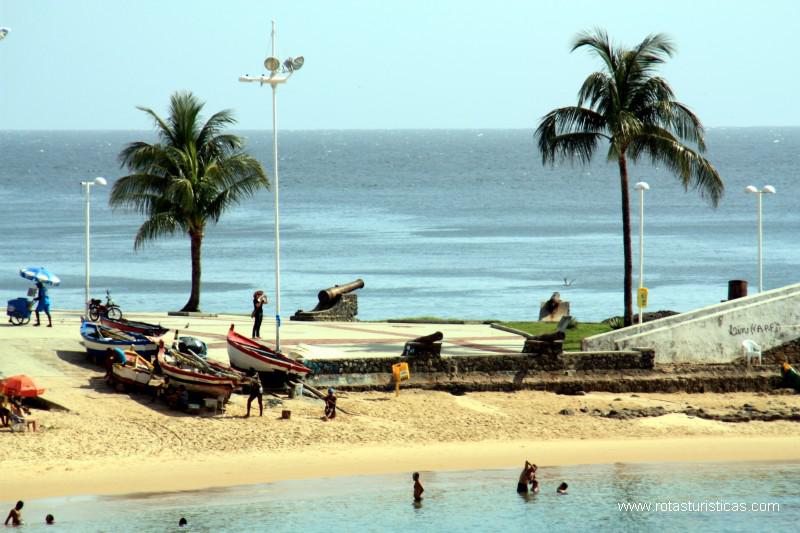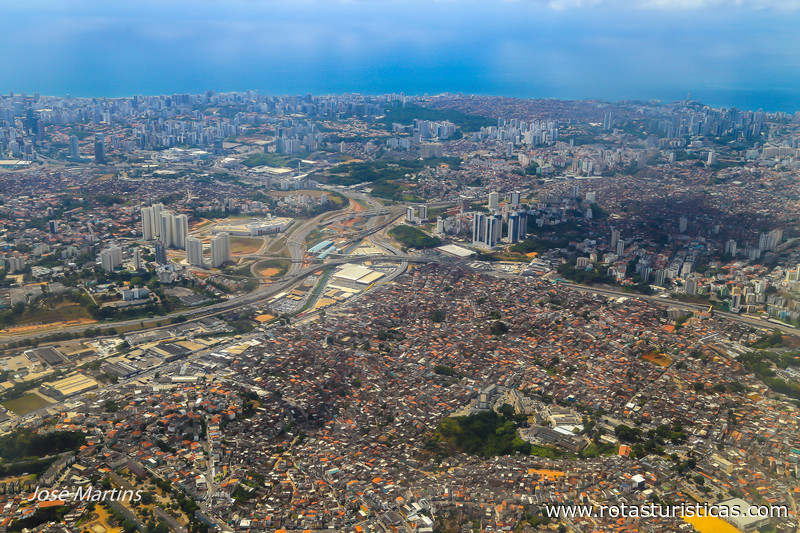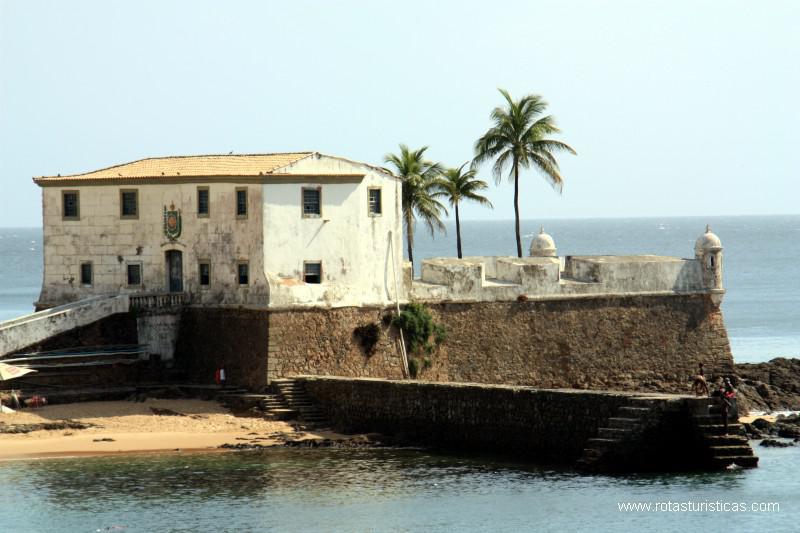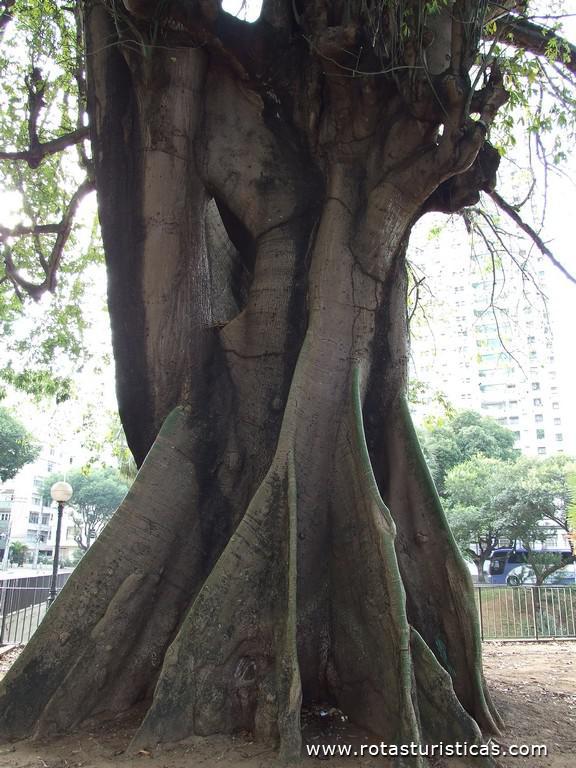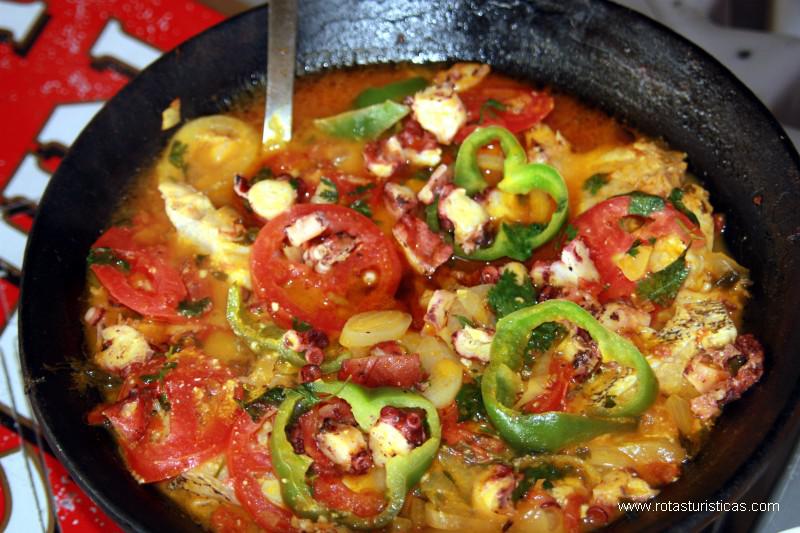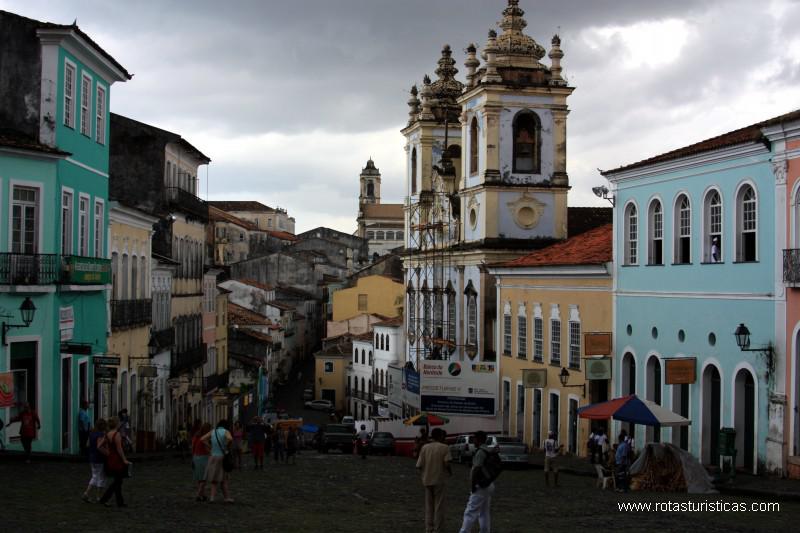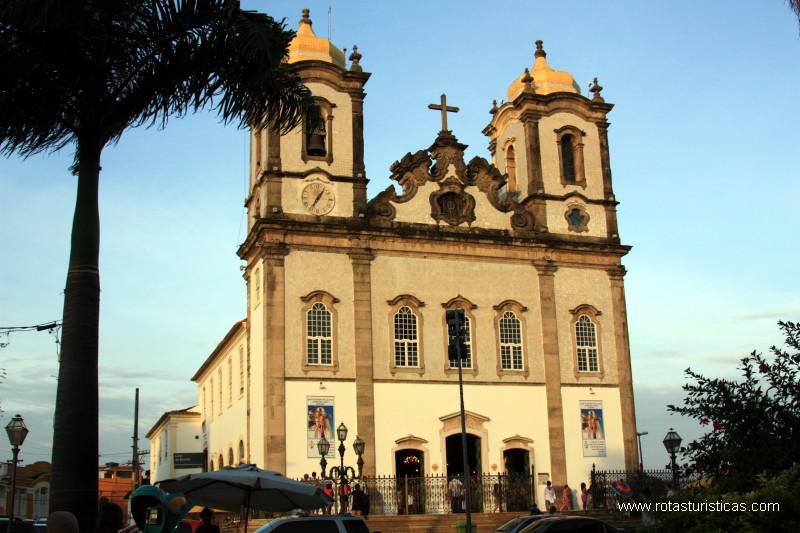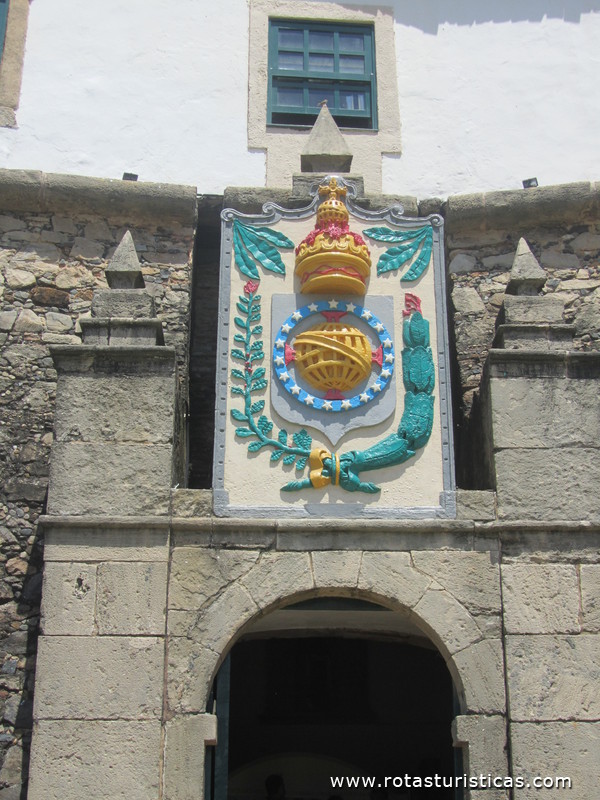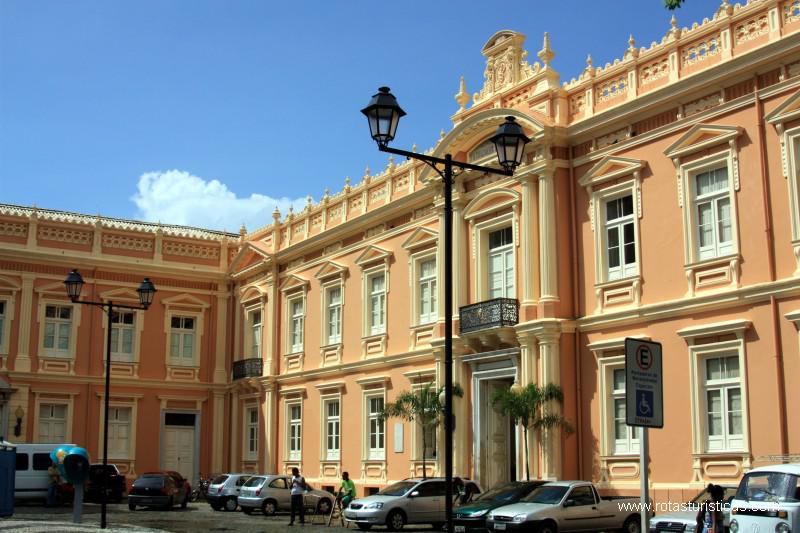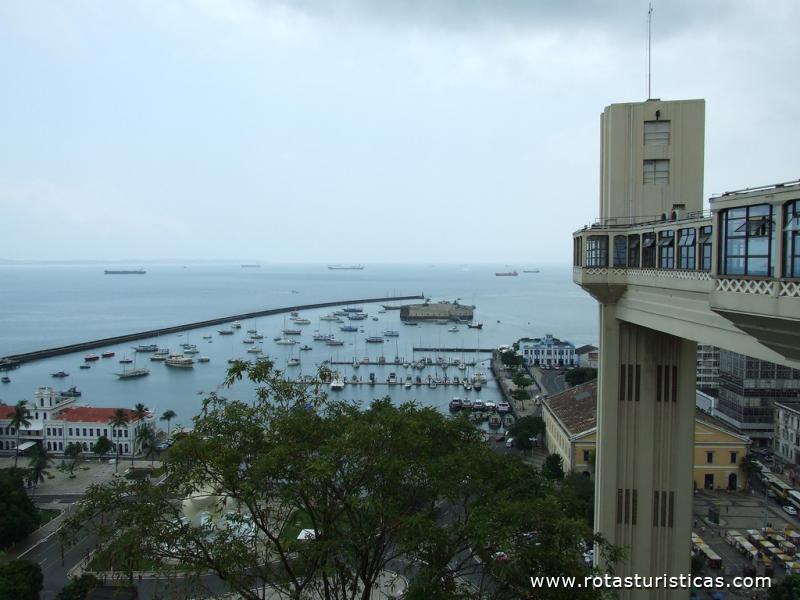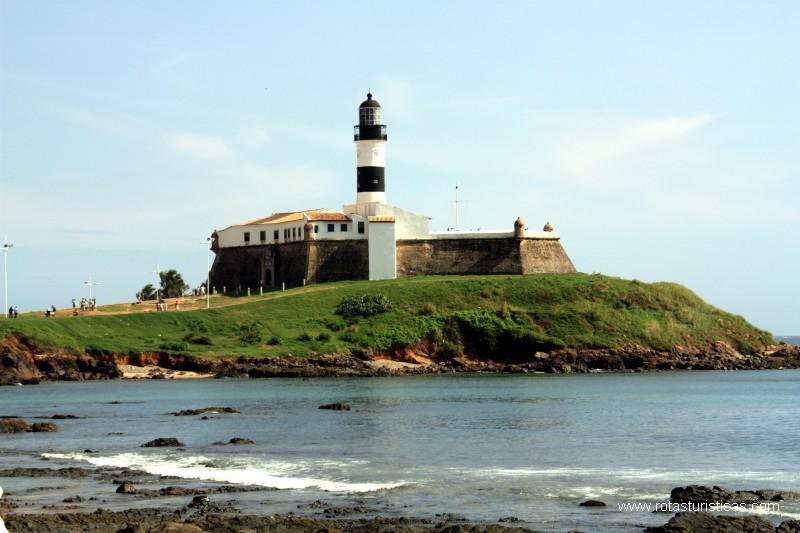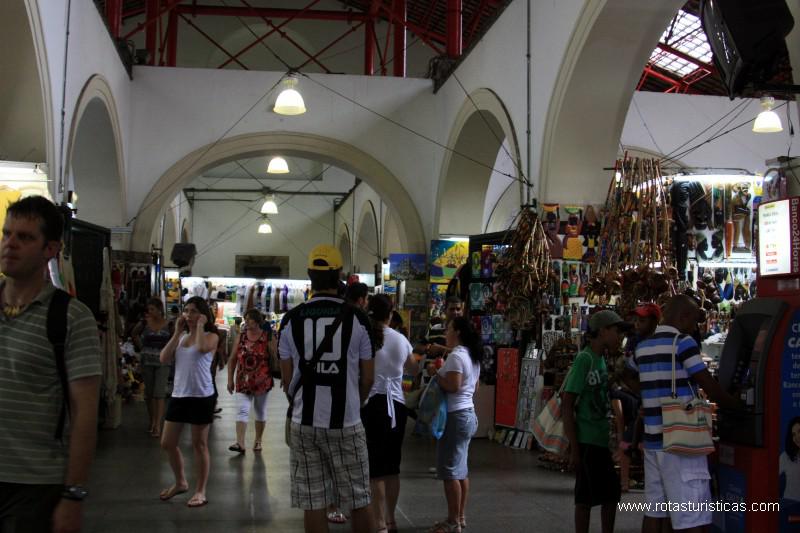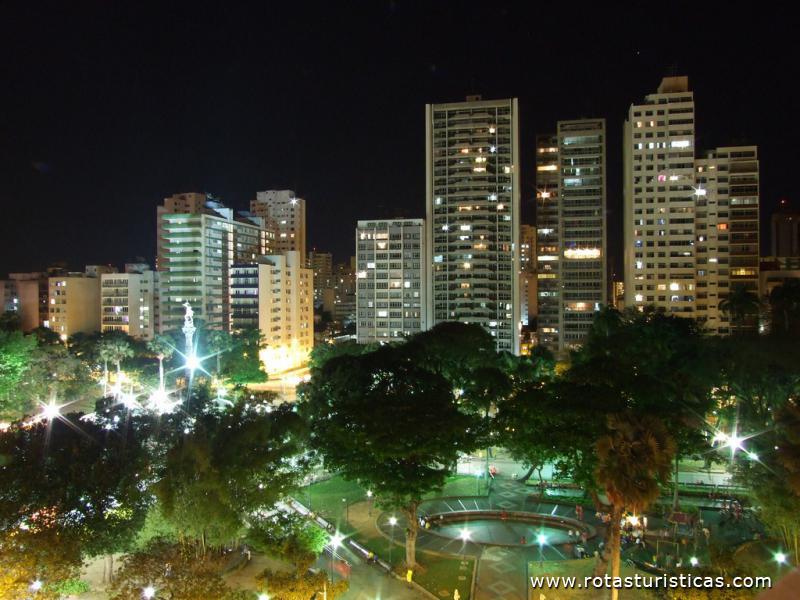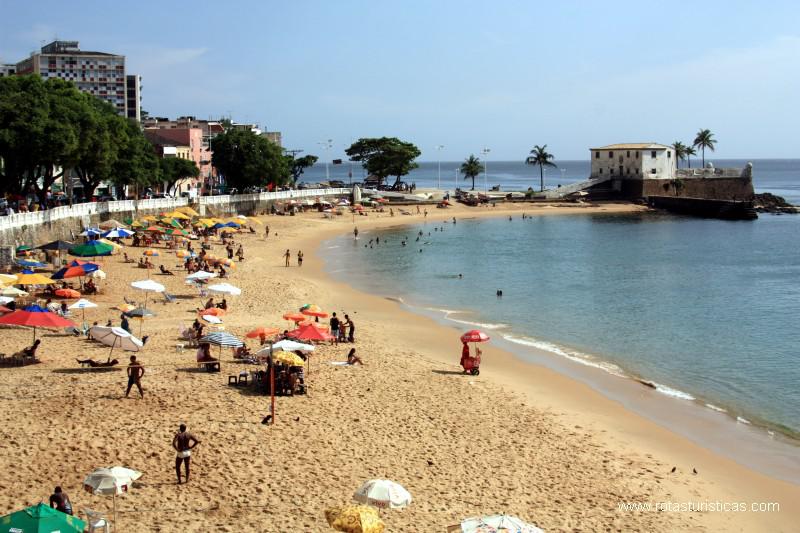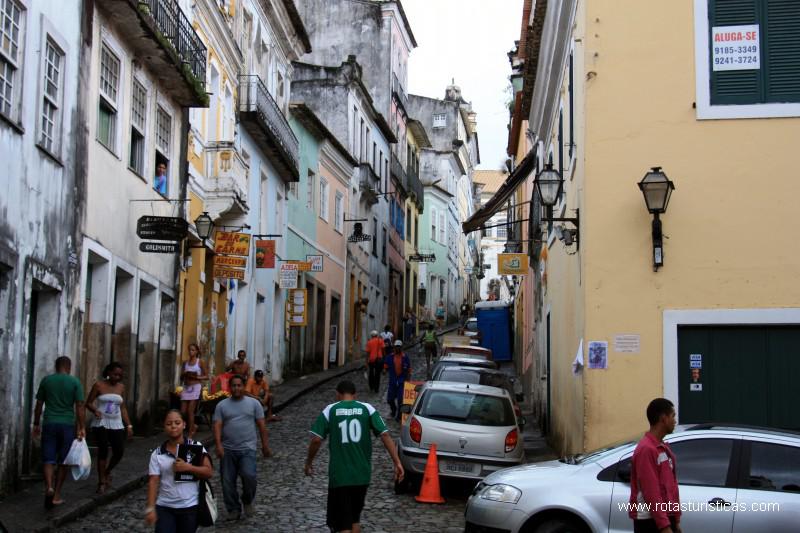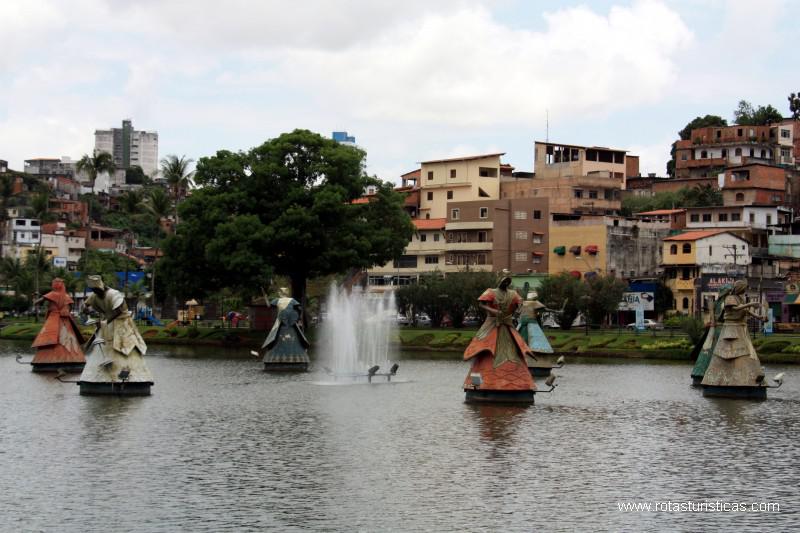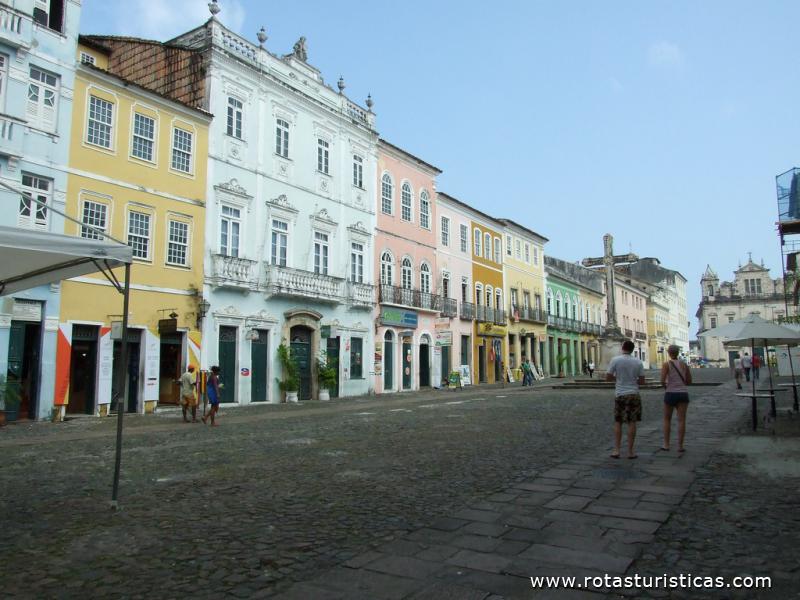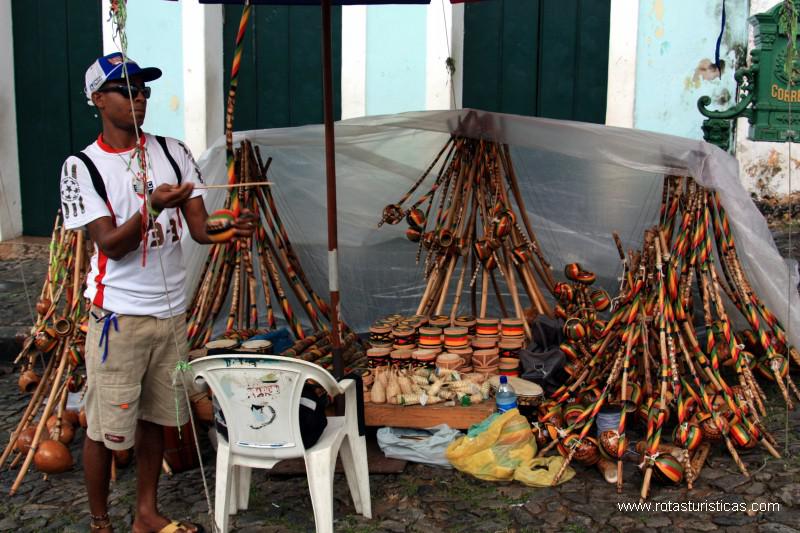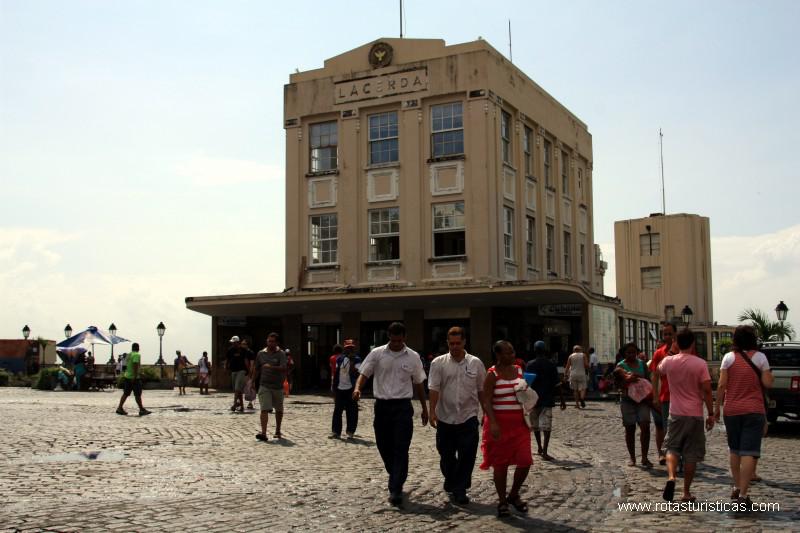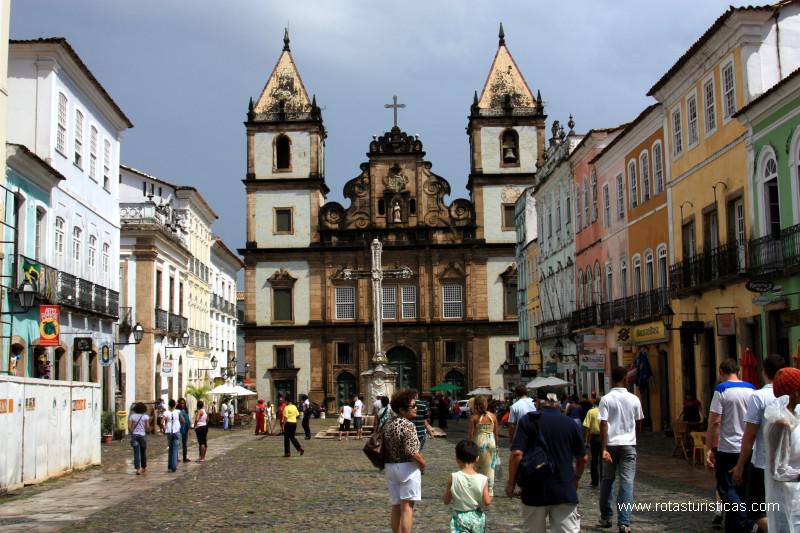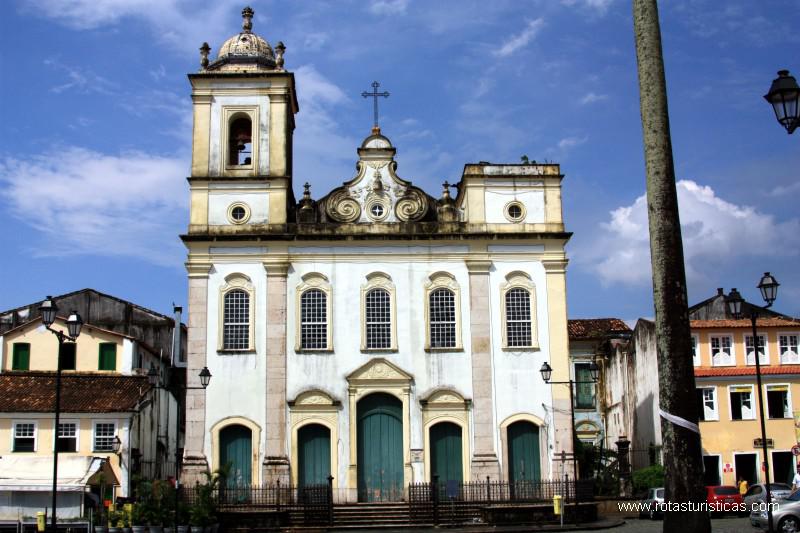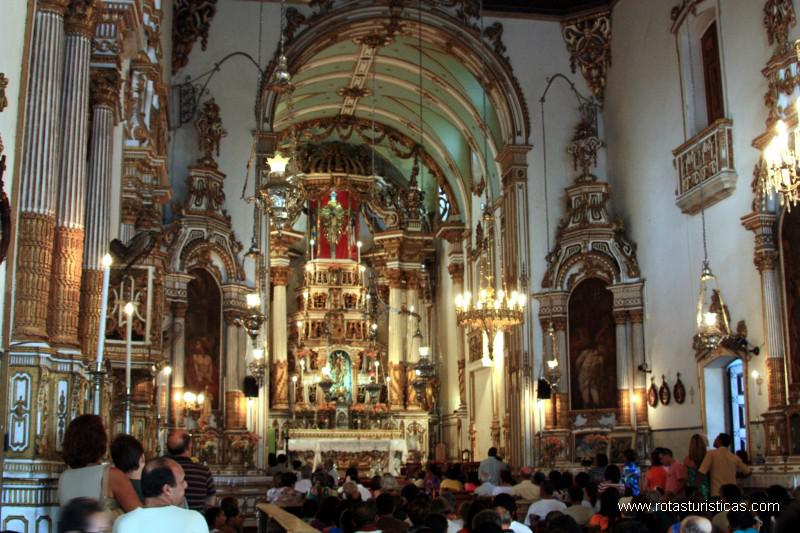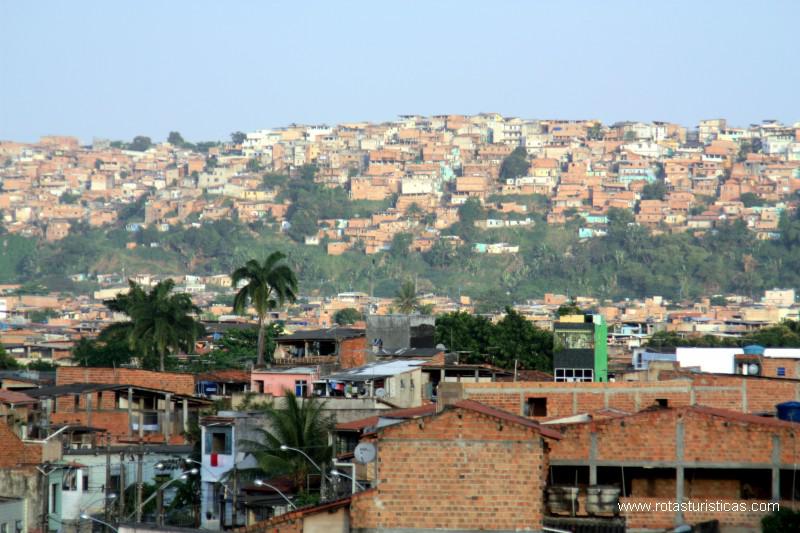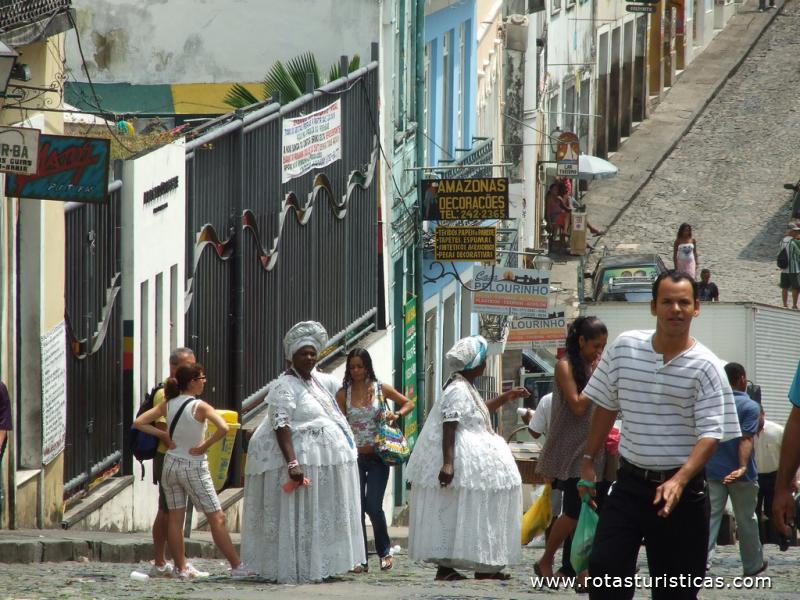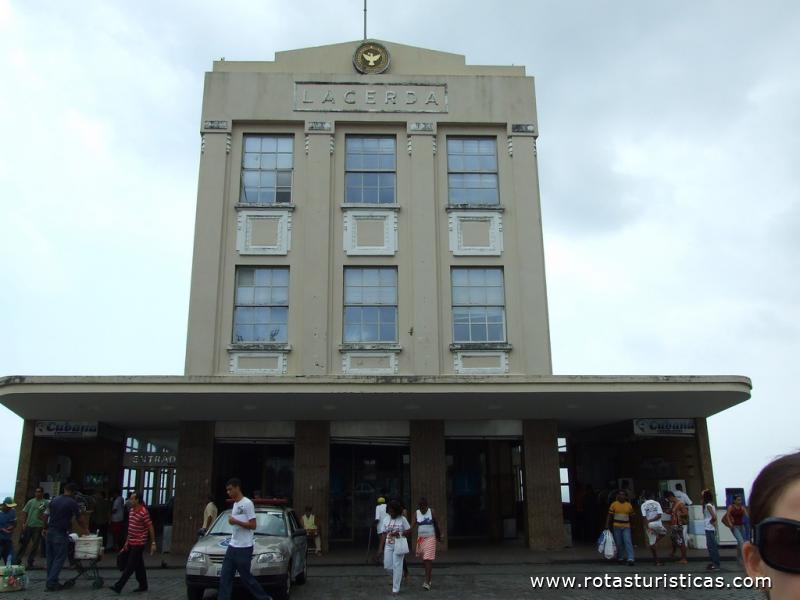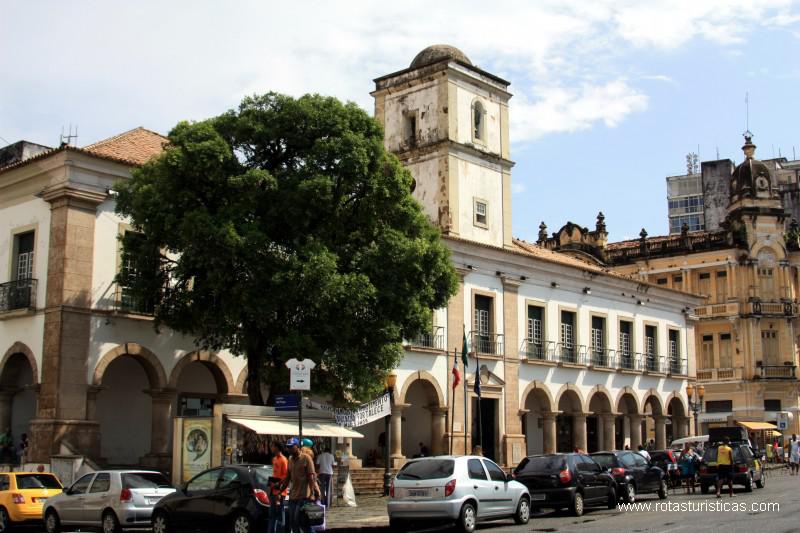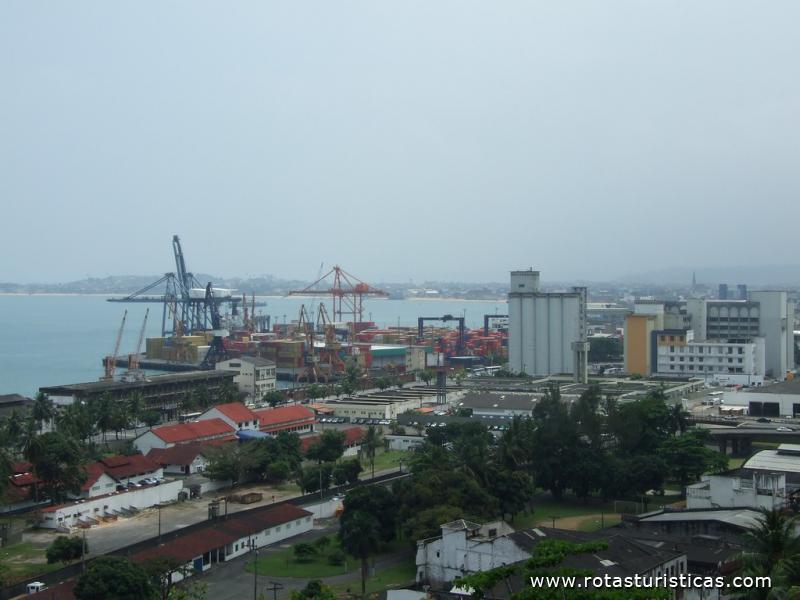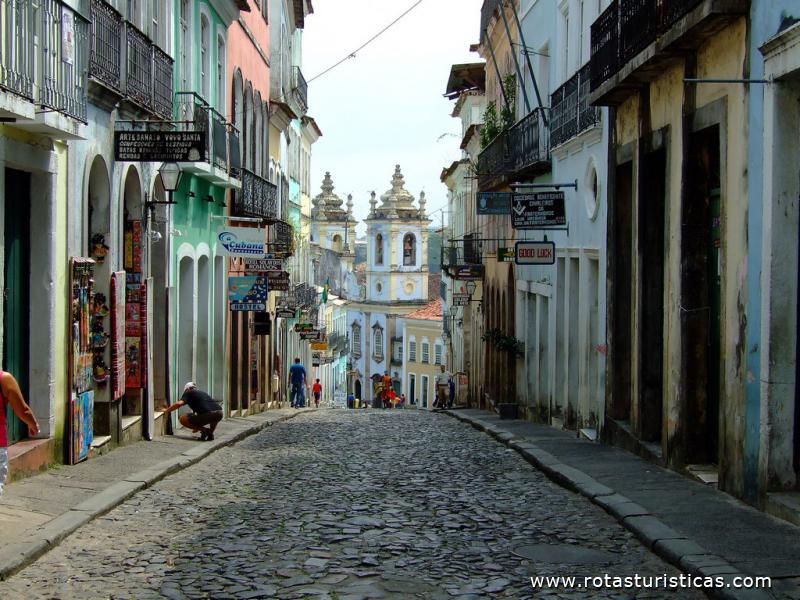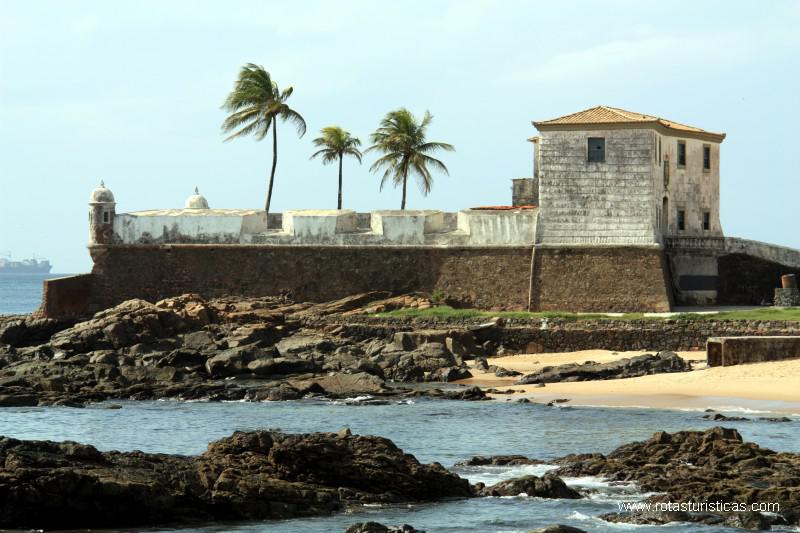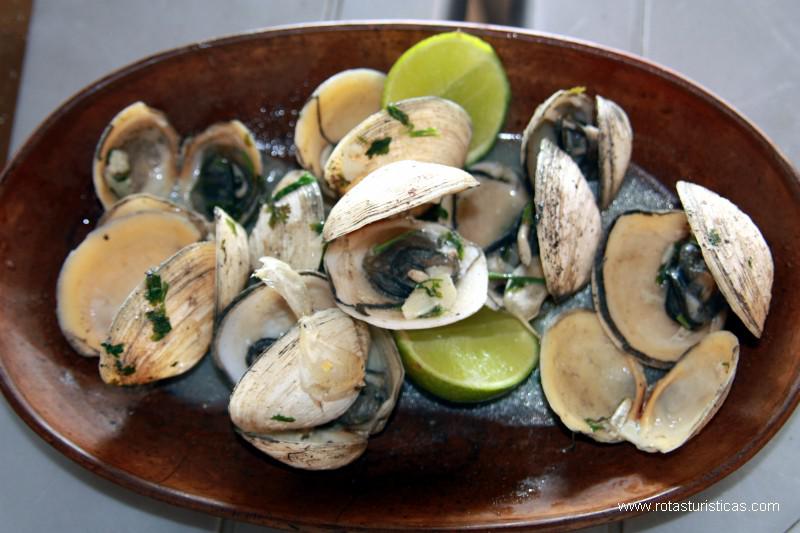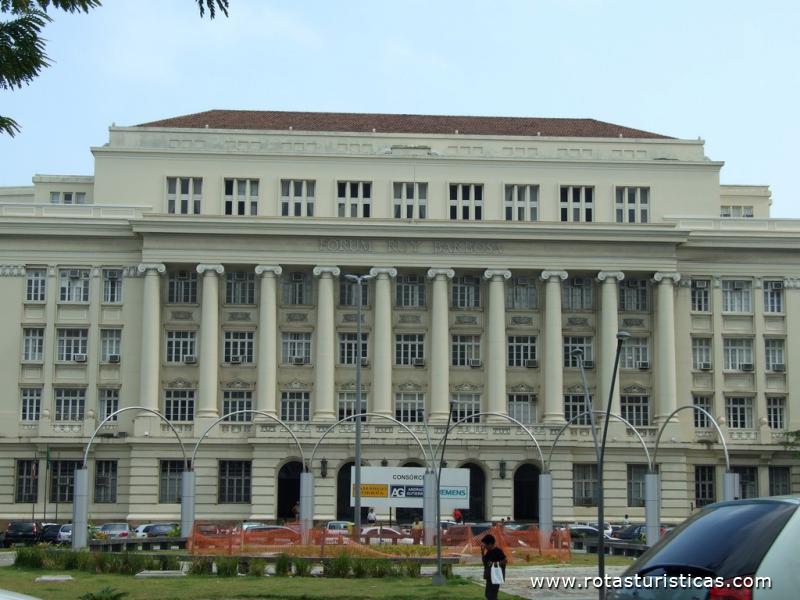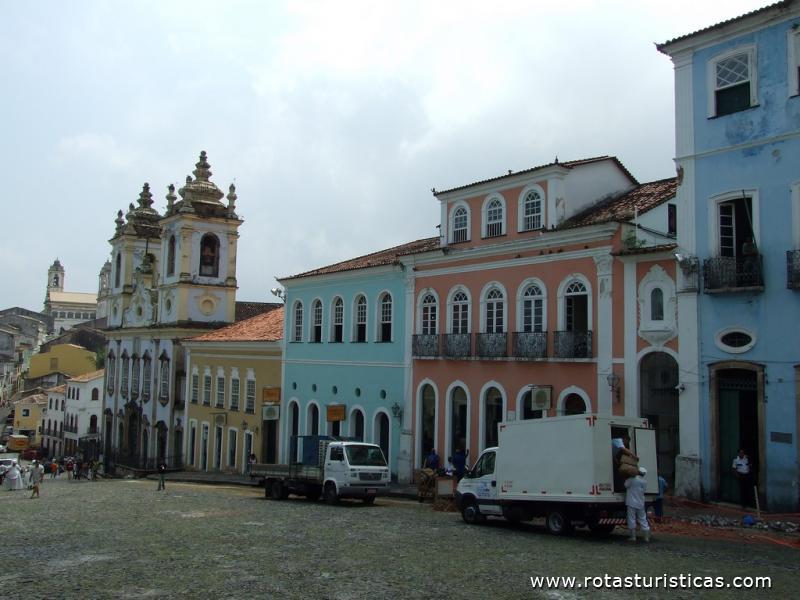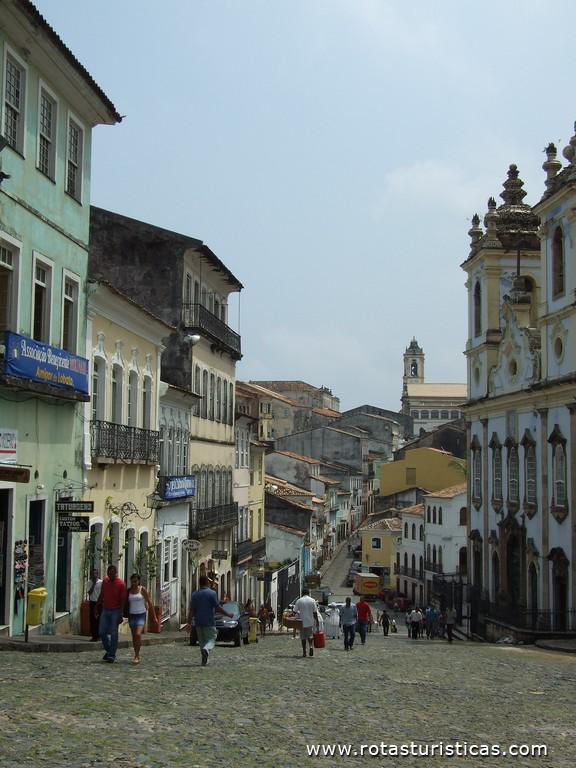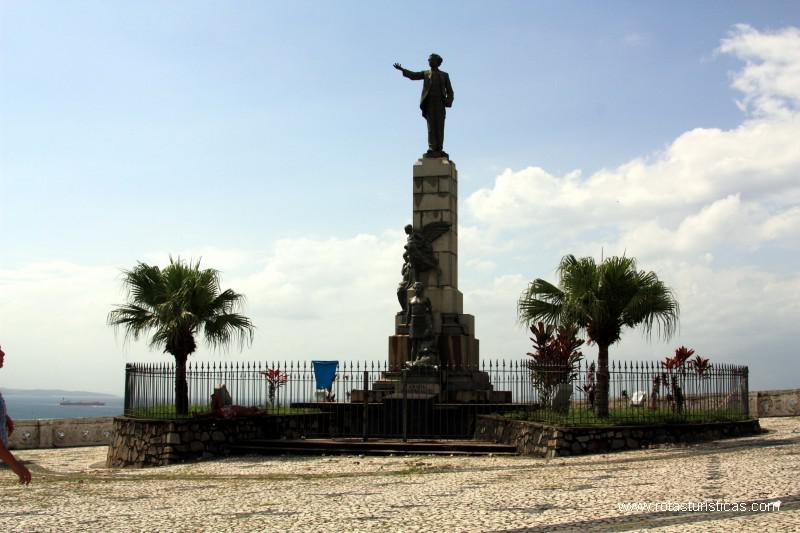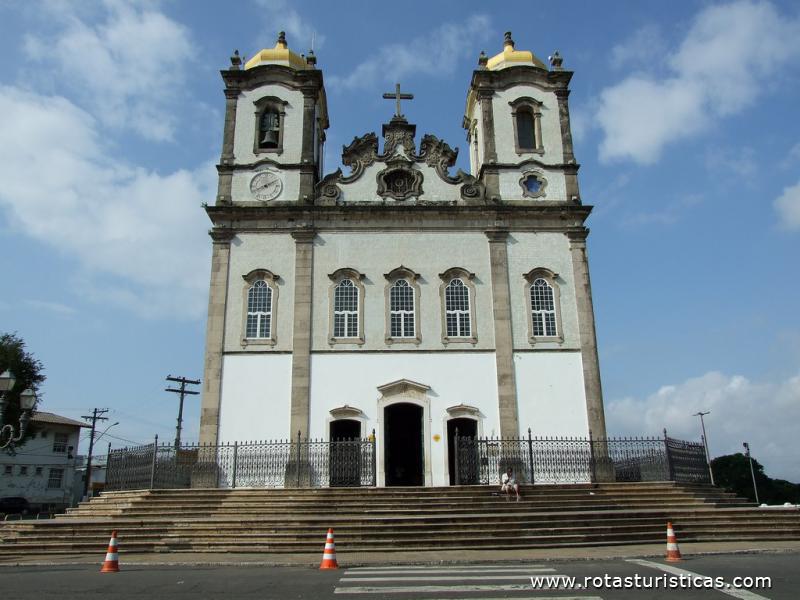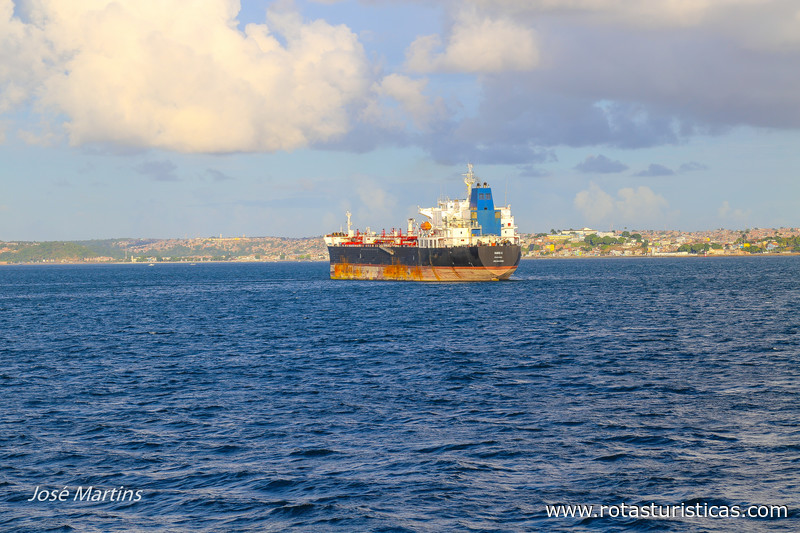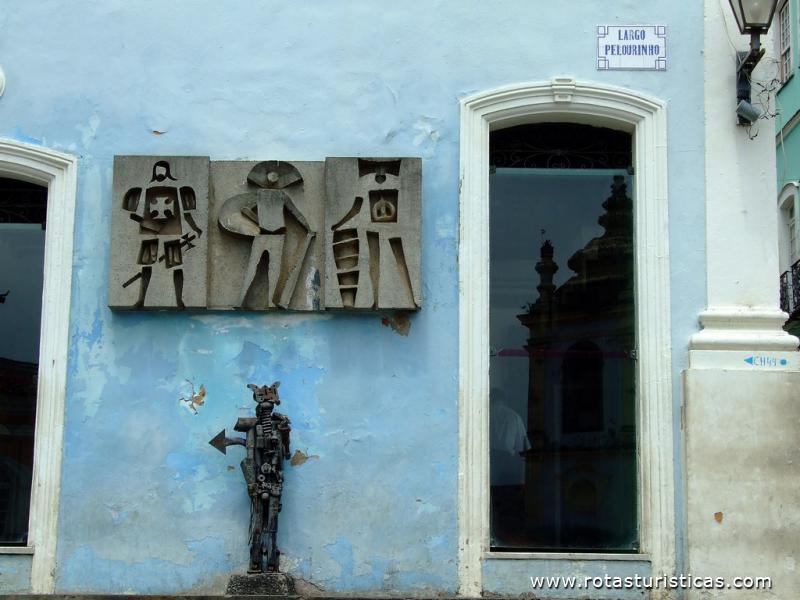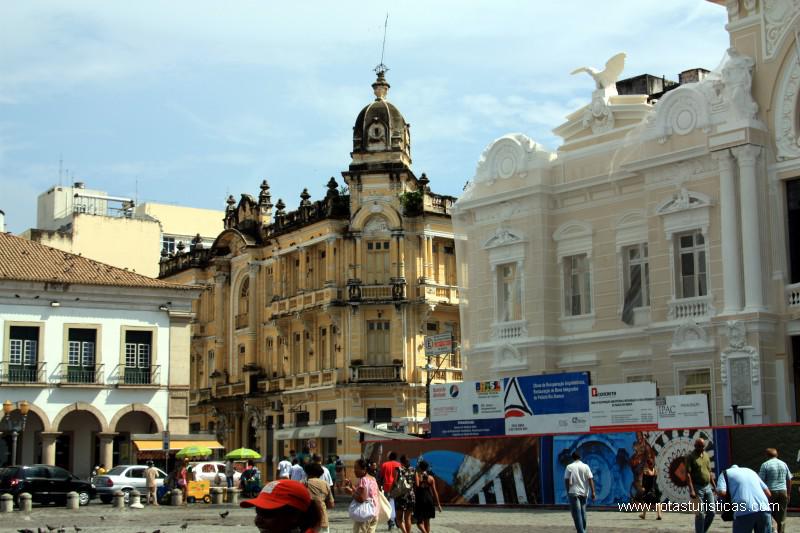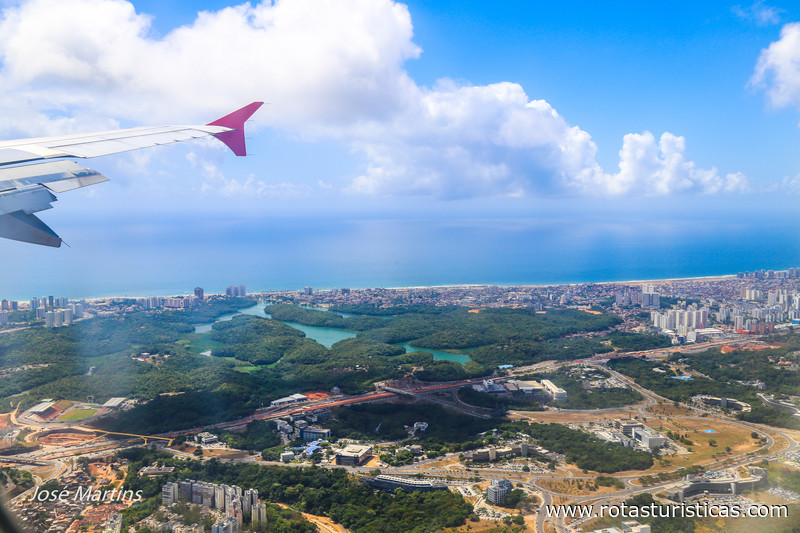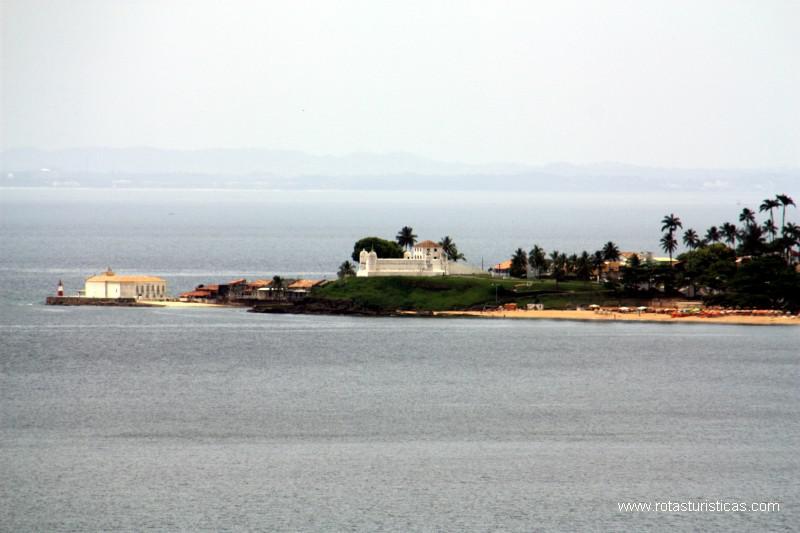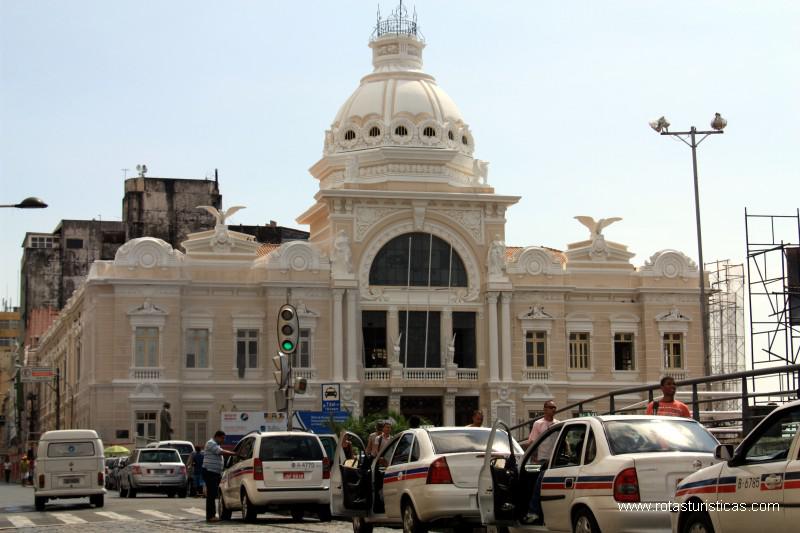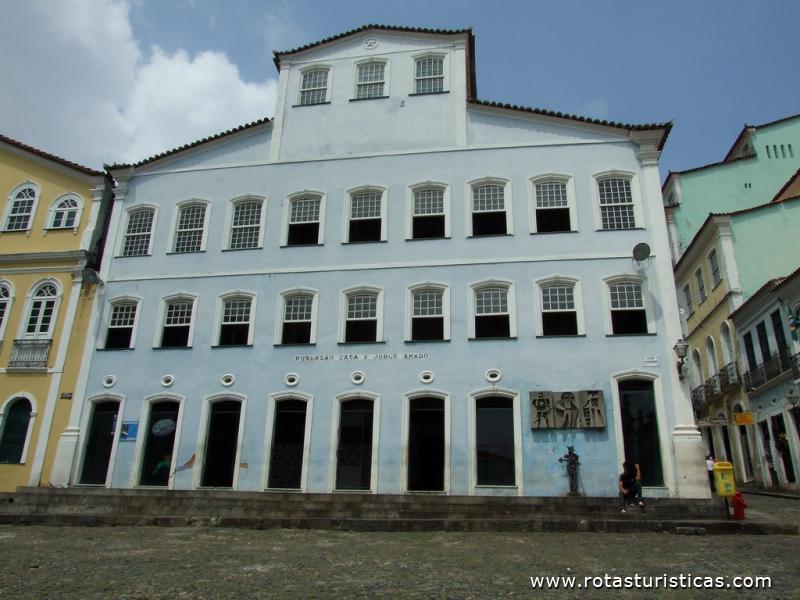Pictures of: Salvador da Bahia
Location map
Airports
Hotels and other Accommodation
What to visit
Consulates & Embassies
World Nomads
The Travel Insurance with the largest coverage

The Travel Insurance with the largest coverage

Salvador da Bahia
Salvador da Bahia is the largest city on the northeast coast of Brazil and the capital of the Brazilian Northeastern state of Bahia.
Salvador da Bahia is the oldest city in Brazil, having been its first colonial capital for more than 200 years, until it was replaced by Rio de Janeiro in 1763, making it one of the oldest cities in the Americas.
For a long time, it was simply known as Bahia, and appears as Salvador da Bahia, in order to differentiate it from other Brazilian cities of the same name, in many maps and books from before the mid-20th century.
Salvador da Bahia is the third most populous city in Brazil, after São Paulo and Rio de Janeiro. The metropolitan area of the city, has about 3.5 million people, however, is the seventh most populous Brazilian urban agglomeration, and the third in the Northeast region of Brazil.
The African influence on many cultural aspects of the city makes it the center of Afro-Brazilian culture. This is reflected in Afro-Brazilian cultural practices that are celebrated, such as the candomblé religion, the Yoruba faith, similar to Haitian voodoo and Santeria de Cuba.
The historical center of Salvador, often called the Pelourinho, is famous for its Portuguese colonial architecture with historical monuments dating from the 17th to the 19th centuries and was declared a World Heritage Site by UNESCO in 1985.
The city of Salvador is notable in Brazil for its cuisine, music and architecture, and its metropolitan area is the richest in the Northeast of Brazil
Salvador da Bahia is the oldest city in Brazil, having been its first colonial capital for more than 200 years, until it was replaced by Rio de Janeiro in 1763, making it one of the oldest cities in the Americas.
For a long time, it was simply known as Bahia, and appears as Salvador da Bahia, in order to differentiate it from other Brazilian cities of the same name, in many maps and books from before the mid-20th century.
Salvador da Bahia is the third most populous city in Brazil, after São Paulo and Rio de Janeiro. The metropolitan area of the city, has about 3.5 million people, however, is the seventh most populous Brazilian urban agglomeration, and the third in the Northeast region of Brazil.
The African influence on many cultural aspects of the city makes it the center of Afro-Brazilian culture. This is reflected in Afro-Brazilian cultural practices that are celebrated, such as the candomblé religion, the Yoruba faith, similar to Haitian voodoo and Santeria de Cuba.
The historical center of Salvador, often called the Pelourinho, is famous for its Portuguese colonial architecture with historical monuments dating from the 17th to the 19th centuries and was declared a World Heritage Site by UNESCO in 1985.
The city of Salvador is notable in Brazil for its cuisine, music and architecture, and its metropolitan area is the richest in the Northeast of Brazil
Tourism
Salvador is also known as the happiness capital of Brazil due to its numerous outdoor festivals, including its street carnival.
In Salvador da Bahia there is no time to enjoy all the beauty, whether to walk the long beaches or take a boat and go to the Bay of All Saints to explore many more kilometers of beach on the Island of Itaparica.
Some are more isolated than others and almost all can appreciate the curling of the waves because of the reef barrier.
For history buffs there are many secular buildings, churches and museums.
But the biggest attraction of the city, is the Carnival. From January, Salvador da Bahia launches an era of festivals and festivals that, over six weeks, turns into a street party with lots of dancing and music. Those who know it claim to be better than the Rio Carnival considered the best in the world.
It starts in the lively Rio Vermelho neighborhood, which is the home of the Yemanjá festival where the pre-carnival warm-up party begins with the followers of candomblé, the animist religion introduced by the slaves of West Africa, to make the presentation flowers and other gifts for the sea goddess. On the day of the feast the small beach is filled with devotees dressed in white offering flowers to the sea.
N rest of the year in Rio Vermelho, the SESI Theater has regional live music on the patio every night of the week.
In Salvador da Bahia there is no time to enjoy all the beauty, whether to walk the long beaches or take a boat and go to the Bay of All Saints to explore many more kilometers of beach on the Island of Itaparica.
Some are more isolated than others and almost all can appreciate the curling of the waves because of the reef barrier.
For history buffs there are many secular buildings, churches and museums.
But the biggest attraction of the city, is the Carnival. From January, Salvador da Bahia launches an era of festivals and festivals that, over six weeks, turns into a street party with lots of dancing and music. Those who know it claim to be better than the Rio Carnival considered the best in the world.
It starts in the lively Rio Vermelho neighborhood, which is the home of the Yemanjá festival where the pre-carnival warm-up party begins with the followers of candomblé, the animist religion introduced by the slaves of West Africa, to make the presentation flowers and other gifts for the sea goddess. On the day of the feast the small beach is filled with devotees dressed in white offering flowers to the sea.
N rest of the year in Rio Vermelho, the SESI Theater has regional live music on the patio every night of the week.
Gastronomy
Salvador has its own kitchen. You see "baianas" de Acarajé everywhere, usually dressed in white (the color of Iansã, goddess of the wind), the tables scattered with a variety of spicy and exotic fast food from the city itself.
One acarajé is basically a bread made from bean puree from which the skins have been removed (supposedly frosty beans but, in fact, it is almost always the cheapest brown bean, so usual in Bahia).
The must is fried in palm oil (derived from a bone found in palm palm) and the resulting acarajés are usually eaten accompanied by shrimp (small dried shrimp), pepper (pepper sauce), vatapá (a paste made of dried shrimp, peanut, cashew nut, coconut milk and oil palm), caruru (a kind of okra stew) and salad (chopped tomatoes with onions and coriander).
One variation of the acarajé is the abará. A abará is fundamentally the same as a acarajé, except that instead of being fried it is cooked in banana leaf.
Another typical dish here is moqueca, a stew usually cooked and served in a large earthenware bowl and consisting mainly of some seafood (or a combination of several), palm oil and coconut milk (along with a panoply of other ingredients , according to the regional styles and personal preferences of the cook.
Bobó (bo-BO) is the moqueca thickened with aipim (cassava). Sometimes the palm oil is left out of these dishes in order to spare the delicate stomachs, but palm oil is like eating garlic bread without the garlic.
It is impossible to be in Salvador da Bahia without a cold drink and the drink of choice is caipirinha. Served in a glass on the ice is made with lemon wedges crushed in slices, sugar and a large dose of cachaça a Brazilian liquor.
One acarajé is basically a bread made from bean puree from which the skins have been removed (supposedly frosty beans but, in fact, it is almost always the cheapest brown bean, so usual in Bahia).
The must is fried in palm oil (derived from a bone found in palm palm) and the resulting acarajés are usually eaten accompanied by shrimp (small dried shrimp), pepper (pepper sauce), vatapá (a paste made of dried shrimp, peanut, cashew nut, coconut milk and oil palm), caruru (a kind of okra stew) and salad (chopped tomatoes with onions and coriander).
One variation of the acarajé is the abará. A abará is fundamentally the same as a acarajé, except that instead of being fried it is cooked in banana leaf.
Another typical dish here is moqueca, a stew usually cooked and served in a large earthenware bowl and consisting mainly of some seafood (or a combination of several), palm oil and coconut milk (along with a panoply of other ingredients , according to the regional styles and personal preferences of the cook.
Bobó (bo-BO) is the moqueca thickened with aipim (cassava). Sometimes the palm oil is left out of these dishes in order to spare the delicate stomachs, but palm oil is like eating garlic bread without the garlic.
It is impossible to be in Salvador da Bahia without a cold drink and the drink of choice is caipirinha. Served in a glass on the ice is made with lemon wedges crushed in slices, sugar and a large dose of cachaça a Brazilian liquor.
Weather
The climate in Salvador is typically tropical, with humidity, and rain conditions throughout the year.
Climatic conditions are common throughout the region of Salvador da Bahia.
May, June and July are the driest months of the year, although they still receive a good amount of rainfall.
Climatic conditions are common throughout the region of Salvador da Bahia.
May, June and July are the driest months of the year, although they still receive a good amount of rainfall.
Other tourist destinations in:
Brazil
Brazil
Other world tourist destinations
Why to book with ROTAS TURISTICAS
The best prices
Our partnerships with the world´s largest operators offer research on the best market prices.
More options
At Rotas Turisticos you can book the hotel, buy the air ticket, book the transfer from the airport to the hotel and vice versa, book the local excursions, rent the car, take travel insurance and consult the places to visit and where to go.
Holiday Tips & Destinations
Hundreds of holiday destinations with all the options that allow you to easily choose the destination that best suits your dream vacation.
ROTAS TURISTICAS
Links

